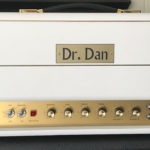 Many amplifiers have come and gone in my music room through the years, and a small handful have been genuinely missed. One in particular that I was always interested in having back in the fold was an original 1968 Marshall model 1959 Super Lead with the serial number range in the 12,000s. I owned just one many years ago but had needed to sell it, along with many other pieces, during a more challenging time in life. The memory of that amp remained with me through the years that followed as it had that perfect blend of creaminess and crunch in its tone as well as a feel that delivered the perfect amount of compression. Indeed, it was truly one of the good ones. And no doubt the best Marshall I’ve ever had.
Many amplifiers have come and gone in my music room through the years, and a small handful have been genuinely missed. One in particular that I was always interested in having back in the fold was an original 1968 Marshall model 1959 Super Lead with the serial number range in the 12,000s. I owned just one many years ago but had needed to sell it, along with many other pieces, during a more challenging time in life. The memory of that amp remained with me through the years that followed as it had that perfect blend of creaminess and crunch in its tone as well as a feel that delivered the perfect amount of compression. Indeed, it was truly one of the good ones. And no doubt the best Marshall I’ve ever had.
Read More »
Tag Archives: marshall
David Szabados Interview on GEARCAST Show
Check out the recent GEARCAST show on Kyle Bull’s YouTube channel where I had a great discussion about all things related to guitar tone and music.
Stories of The British Amp Invasion Come to Life
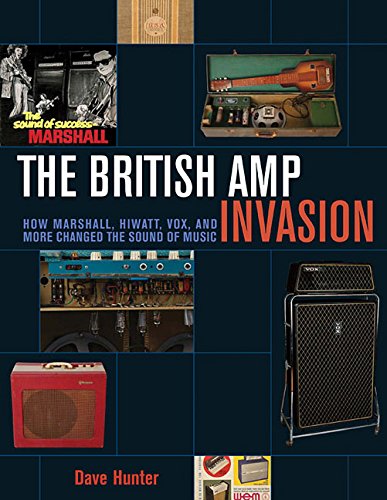 Dave Hunter’s latest book is entitled, The British Amp Invasion: How Marshall, Hiwatt, Vox, and More Changed the Sound of Music, and covers a span of the influence of British amplification from the late 1950s onward. As an industry, the companies behind the amplifiers are a fascinating study, not only from a design and sonic perspective, but also because of the stories themselves that surround their business success and growth (or for some, their bad deals and decline).
Dave Hunter’s latest book is entitled, The British Amp Invasion: How Marshall, Hiwatt, Vox, and More Changed the Sound of Music, and covers a span of the influence of British amplification from the late 1950s onward. As an industry, the companies behind the amplifiers are a fascinating study, not only from a design and sonic perspective, but also because of the stories themselves that surround their business success and growth (or for some, their bad deals and decline).
Read More »
Finding Your Distortion Tone (Hint: Mids)
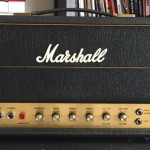 If only things were so easy that we could buy the guitar we felt comfortable with, plug into an amp, maybe add a pedal or two, and then be done. Tone Nirvana. It usually doesn’t happen this way however. The problem is that there are numerous choices for gear and, and even more options for putting together the whole rig, to create an effective system that is optimized. And just how we use the equipment (whether for live use or studio recording) also makes a difference in finding what works for guitarists.
If only things were so easy that we could buy the guitar we felt comfortable with, plug into an amp, maybe add a pedal or two, and then be done. Tone Nirvana. It usually doesn’t happen this way however. The problem is that there are numerous choices for gear and, and even more options for putting together the whole rig, to create an effective system that is optimized. And just how we use the equipment (whether for live use or studio recording) also makes a difference in finding what works for guitarists.
We recently wrote about the challenges with the Internet and its opinions. You can find as many people who will love or hate any particular piece of gear. This can become frustrating when trying to dial in a tone you’re interested in capturing.
Read More »
Marshall Super Lead Tone Tips and Tricks
The following Marshall Super Lead tone tips and tricks will enable you to get much more versatility out of this legendary amplifier. Some of these may even surprise you. One thing to note – NONE of these involve modification to the original Marshall circuit. Those looking for the true Marshall sound only need use an original, unmodified Super Lead.
Read More »
Marshall JTM-45 Reissue Modification – Part II
In part I of our Marshall JTM-45 transformation process, we installed a point-to-point board from Metropoulos Amplification and began to hear the positive results of our test Marshall as it came to new life.
Now, in Part II of our continued Marshall JTM-45 transformation, we move forward with two additional changes in addition to having the opportunity to compare the final results to an original 1964 badge-logo Marshall JTM-45. The two changes that we decided to perform were to swap out the stock output transformer to a Mercury Magnetics Axiom O45JT-C model as well as to upgrade the board’s capacitors to those made by SoZo Amplification. To say that we were excited as well as just plain curious about the final results, especially when we could now compare it to an original JTM-45— is an understatement.
Read More »
Marshall Hand-wired Reissue 18 Watt Combo and 20 Watt Head/Cabinet
Introduction
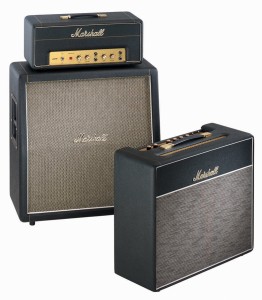 Marshall’s long-awaited handwired series reissue amplifiers are finally here with the debut of the company’s 1974X model 18-watt combo and 2061X model 20-watt head with 2061CX cabinet. These first reissue models are based on the originals produced in the ‘60s and ‘70s and Marshall has assured us that every attention to detail has been made. And these are not limited-edition reissues, but are part of Marshall’s regular production lineup!
Marshall’s long-awaited handwired series reissue amplifiers are finally here with the debut of the company’s 1974X model 18-watt combo and 2061X model 20-watt head with 2061CX cabinet. These first reissue models are based on the originals produced in the ‘60s and ‘70s and Marshall has assured us that every attention to detail has been made. And these are not limited-edition reissues, but are part of Marshall’s regular production lineup!
Even the included manuals proudly cover the story of the many detailed aspects of the design and development. From the cosmetic finish to the construction details of the transformers and customized speakers, it is clear that Marshall team set out on a mission to create the ultimate reissues.
Read More »
THD Electronics Flexi 50 Amp Head
"Wait a minute, this amp isn’t a clone of a plexi Marshall?!"
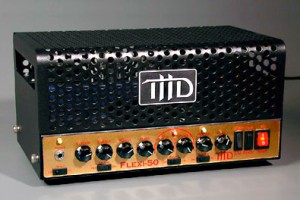 That was my initial thought when plugging into this amp for the very first time. And that’s actually a good thing for many users who will enjoy the added flexibility of the many tonal options presented by THD Electronic’s new Flexi 50 amplifier. Though my initial idea really was to pit a ’68 50 watt Marshall against the THD Flexi-50 amplifier head, it was clear from both looking at and listening to the Flexi-50 that this would have been an apples to oranges type of comparison. The Flexi-50 offers quite a bit of tonal and feature-set variety and it would be inappropriate to simply compare it to one single amplifier.
That was my initial thought when plugging into this amp for the very first time. And that’s actually a good thing for many users who will enjoy the added flexibility of the many tonal options presented by THD Electronic’s new Flexi 50 amplifier. Though my initial idea really was to pit a ’68 50 watt Marshall against the THD Flexi-50 amplifier head, it was clear from both looking at and listening to the Flexi-50 that this would have been an apples to oranges type of comparison. The Flexi-50 offers quite a bit of tonal and feature-set variety and it would be inappropriate to simply compare it to one single amplifier.
Perhaps I subconsciously took the name "Flexi" and associated it mostly with a 1960’s plexi-era Marshall. In any case, Andy Marshall, THD’s President explained it best: "It’s named the Flexi-50 because of its flexibility in being able to capture vintage British and American tones."
Read More »
Metropoulos Amplification ’68 12000-Series Plexi 100 Watt head
Introduction
"I want an amp that can nail the early Van Halen tone 100% but I don’t have $5,000+ (at the time of this writing – 11/05) for an original Marshall ’67-’68 era plexi." This is what many of you have written to us and asked for in the past. "What should I use?"
Some of you have even had more demanding requirements for your amplifier citing that in addition to the Van Halen tone, you ALSO wanted the ability for the amp to respond and produce tones as diverse as Cream, Jimi Hendrix, Led Zeppelin, and AC/DC, among others.
Read More »
100 Watt Marshall Super Lead
The 100 Watt Marshall Super Lead was THE amp that started it all for the greatest rock and roll tones achieved – or I should say, the greatest LOUD rock and roll tones of the 60’s. Yes, the Vox AC 30, Fender Bassman, and even the Marshall JTM 45 came well before Marshall’s famous 100-watter, but it was the Super Lead that upped the ante for high-powered rock performances and really is the standard by which all rock guitar tone is judged. With generations of guitar greats such as Jimi Hendrix, Jimmy Page, Edward Van Halen, and countless others all using the Super Lead with stacks of 4 x 12 cabinets, there is no wonder why this amplifier is legendary; especially the very earliest models, known as the "plexi" heads.
Read More »